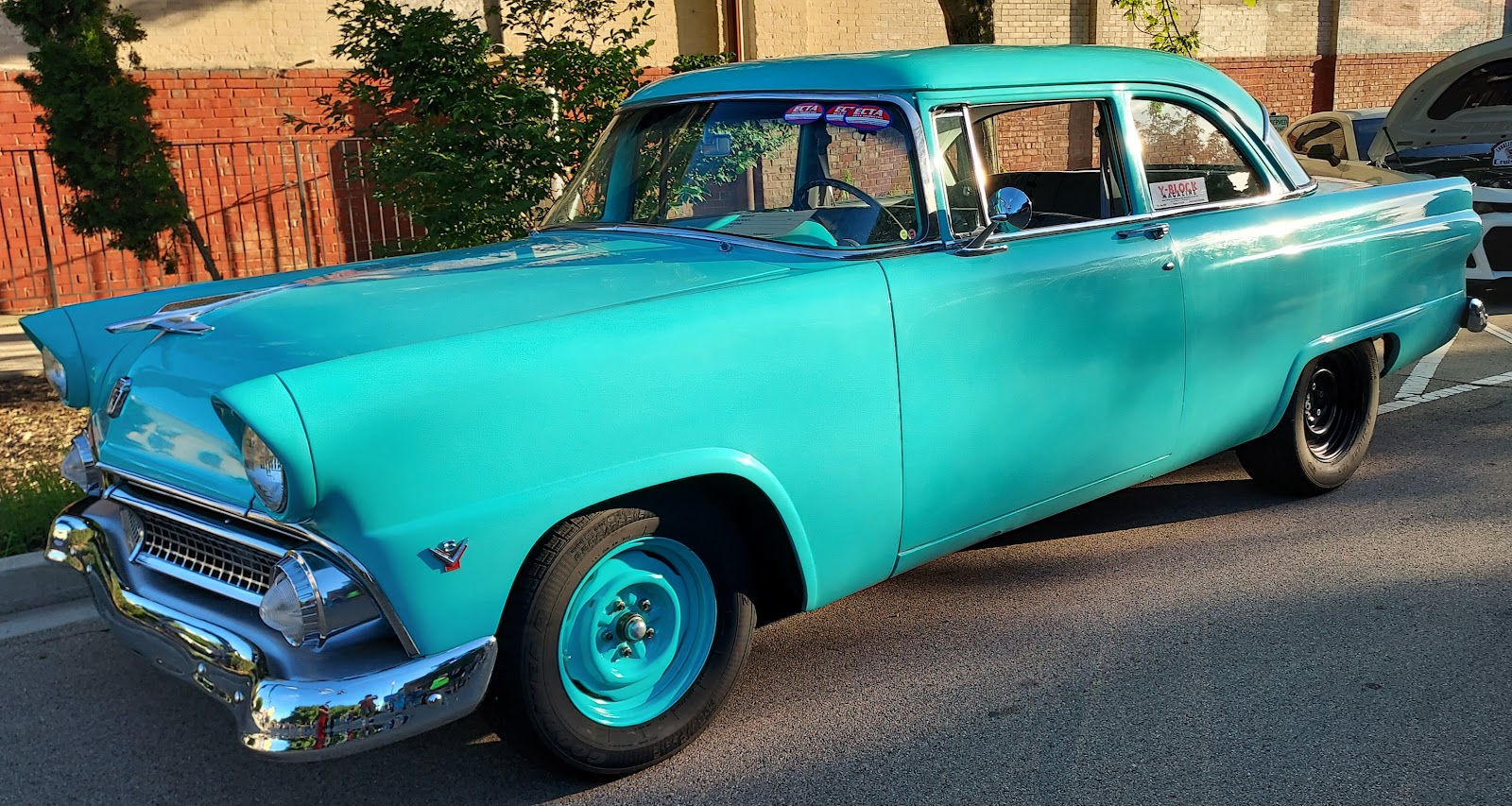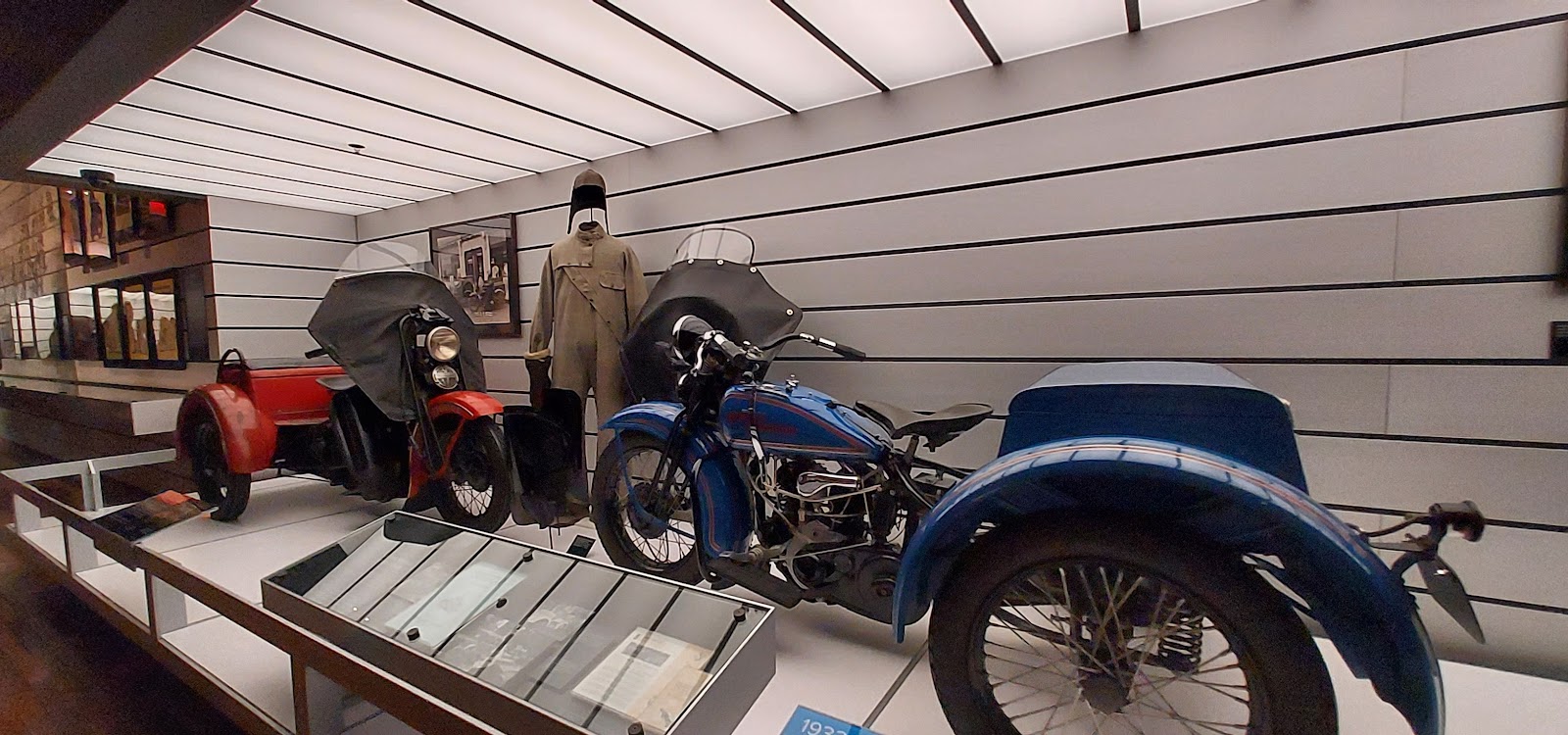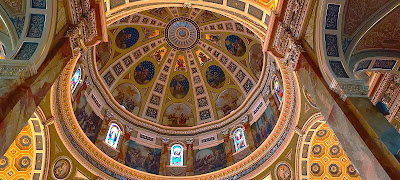We left Springfield, Illinois, for an overnighter at Harvest Host Skydive Chicago in Ottawa, Illinois. Though they offer hookups in a grassy area, we opted for the huge, level, firm gravel boondocking site, providing quick and easy parking and a terrific view of sunset.
We planned to patronize Skydive’s bar and grill, but unfortunately, it was not open yet for the season. Then my parents reneged on doing a dive: Mom is just a big wuss when it comes to heights, and Dad stated there was no way he was jumping out of a perfectly safe plane. Me thinks the rates for humans to do their inaugural jump (which must be done in tandem with a professional) had an impact on their decision ($289/person with a reservation, $309/person if you made a last-minute decision of bravado). Lucky for me, Chicago Skydive had no rate established for a stuffed rat, so I got a freebie! I tipped my professional instructor a few ounces of my coveted cheese in appreciation.
We had laundry and grocery shopping to do, so we did a bit of exploring thereafter. We stumbled upon a huge car show Downtown, spanning 5 city blocks. We eyed some real beauties and enjoyed being among the “locals”. We also visited a couple of Roadside America attractions, like the statue of Abe Lincoln and opponent Stephen Douglas placed in the very park in which they held a debate.
 |
| Mom's pick for "best in show". |
 |
| My favorite, though I think the cute stuffed unicorn in the backseat influenced my decision. |
 |
| OK, not in the show or even a car, but this is one good looking vehicle! |
 |
| Statues commemorate the famous Lincoln-Douglas debate. |
We awoke to gorgeous weather AND a stress-free day of driving. We passed through Lake Geneva, Wisconsin. Ironically, it has a 55+ active community housing complex, pickleball courts, a surgical center, and a funeral home all in a row on the same stretch of road. (How’s that for meeting all your needs in your “golden years”!)
We arrived at our
destination, City Campground in Caledonia, Wisconsin. It is located right within the Racine County
Park Complex. It is small and well maintained. It offers water/electric sites
and a dump station for under $40/night (different rates for weekday vs
weekend plus on-line booking fees). There
are no pull-through sites, only back-ins.
There were lots of local family groups there for 4-6 weeks, for there is
no limit to the number of nights you can stay during the seasonal operation of
mid-April through late October. Though
there is a camp host, this is a fully automated, on-line system. Furthermore,
there is only a daily rate, no weekly or monthly rates are offered.
 |
| First time we had to detach Suite Retreat and Big Boomer. |
With Dad owning/riding a 2010 Road King Classic trike conversion, you probably guessed the first stop on our itinerary in Milwaukee: The Harley-Davidson (H-D) Museum located on Juneau Avenue. (Ironically, it was not Dad, but Mom who was the catalyst to our family becoming motorcyclists. Her ancestor came to this country from Italy through Ellis Island, New York. He crafted musical instruments and sold them from the side-car box of his motorcycle a century ago. Since then, every generation of the family has produced motorcycle riders. So, Mom felt obliged to continue the tradition).
 |
| Maximus at his homecoming! |
It was in a small 10X15-foot shed in 1903 that William Harley, Arthur Davidson and his brother Walter Davidson completed their first motorized bicycle using plans Harley designed in 1901. The trio cranked out 3 units their first year in operation. By 1914 their workforce (totaling 1,570) produced 20,000 motorcycles (1 unit every 5.5 minutes!)
H-D motorcycles
were vital to the military, starting as early as the Poncho Villa Expedition
(1916) and World War I (1917). I found
it interesting to learn that while World War I was in progress, H-D launched a line
of regular bicycles. Going back in time
to foot-powered units proved to be an unsuccessful endeavor, and production was
discontinued by 1923. (Speaking of
going back in time, isn’t it interesting how electric bikes are so popular
today, yet they represent the first motorcycles).
The Museum
gives the history of the Company from its humble beginnings, its achievements,
its facing of bankruptcy, its dark years owned by AMF (makers of bowling
balls and sporting goods—what the heck did they know about motorcycles!),
to where they are today as a multi-billion-dollar operation. The Museum provides descriptions of all the
engine designs, samples of the paint schemes used through the years, and tons
of different bikes to view, from Serial No. 1 to the new 2024 models. It is a must-see for any motorcycling
enthusiast.
 |
| Photo Wall: 100 years of Riders and their Harleys. |
 |
| Mom said, "Yes, I'll take it" when she saw this bike from 1954! |
 |
| Some cool paint schemes used through the years. |
 |
| Serial #1, the first H-D. |
 |
| A 2024 model. |
As most H-D riders will jest, the H-D in Harley-Davidson really stands for "hundred dollars", as that is always the minimum you will spend going into one of their dealerships/stores. There are 2 stores on campus at which to shop, an “outlet” of general H-D merchandise and a store that sells Museum-specific merchandise. Dad made the requisite purchases of a button-down shirt at each of the stores, while I did some test riding.
Our final stop that day was to the National Bobblehead Museum, containing a unique and fun collection of 10,000 head-moving figurines. From ball players to rock stars, from pop culture icons to historical figures, this place has it all, ranging in size from miniatures to the full height and body width of the person they are replicating.
 |
| The Little Rascals. |
 |
| There is a "Karen" to contend with EVERYWHERE, even at the National Bobblehead Museum. |
 |
| Comedian/Ventriloquist Jeff Dunham characters. |
 |
| Every one needs a bobblehead set of all the U.S. Presidents! |
 |
| Thinking of you, Aunt Laurie, my Wicked Witch of the East! |
 |
| Buc-ee, a TX tradition, bobbling over to a state near you! |
 |
| Rat Finks, Aunt Jemimas, Bozo the Clowns--you name 'em, they are here at the National Bobblehead Museum! |
 |
| Hook 'Em Horns! |
I thought bobbleheads were some more modern, gimmicky item. But the concept of a moving head on a figurine dates back to the 18th century. The oldest documented bobblehead was found in England in the 1760s. And the National Bobblehead Museum has bobblehead Chinese candlestick holders in its collection that are from 1841.
 |
| Bobblehead candleholders in the Museum's collection, circa 1841. |
They had a bobblehead treasure hunt and a “Where’s Waldo” challenge. Being the overachieving stuffed rat that I am, I attained success with both contests, and was awarded with a sour ball candy and a Bobblehead Museum sticker. The National Bobblehead Museum is fun for the whole family, and I highly recommend a visit.
The next day we drove and walked through various neighborhoods in the City.
 |
| Rusty the Mastodon in Milwaukee's Third Ward, another Roadside America attraction. |
 |
| The Domes, aka Mitchell Park Horticultural Conservatory. |
 |
| A roofscape of church steeples and a 4-faced clock tower. |
At one point, we found ourselves in the section known as Lincoln Village, where we visited the Basilica of St. Josephat. Founded in 1888, the original church built on this site succumbed to fire just one year later. A second iteration was built but deemed too small for the growing congregation. So, in 1896 the current landmark was constructed, using materials salvaged from the Post Office and Customs House in Chicago (which was built in 1880 but deemed unsafe to occupy in 1884). Most of the Basilica’s resplendent stained-glass windows were installed in 1901.
The Basilica’s namesake was born in 1580 as John Kuncevyc. He served as an Archbishop in Poland in the early 1600s and was martyred on November 12, 1623. He was brutally hacked by axe, shot (just in case he wasn’t dead yet), stripped of his clothing, and his body given to a pack of wild dogs to use as a chew toy, all before his body (what was left of it) was thrown into the river to sink! Here’s the real kicker: this behavior was perpetrated by members of the Orthodox Church because of St. Josephat’s stance on uniting all Catholics under the Pope!
The Basilica is
a magnificent work architecturally, culturally (it was built by Polish
immigrants to pay homage to religious figures that hailed from their homeland),
and artistically (bronze, gold leaf, onyx, marble, stained glass, and a
variety of other ornamental materials were used). With that said, could somebody PLEASE
tell me WHY a Basilica of this opulence would utilize a tacky electronic marquee-style
sign? Insult to injury, it flashes the
slogan, “Come Home to the Dome”! What
are they thinking? This ain’t a
ballfield or stadium! Yeesh!
We also visited Burnham Street to view several American-Built Systems Homes from 1916, representing Frank Lloyd’s Wright’s solution for affordable housing. All measuring and cutting would be done in a factory, with assembly done on site. Wright viewed the System as an alternative to Craftsman mail order homes. A developer built these few homes on Burnham Street on speculation. After a less-than-enthusiastic response to the concept from local residents, you will find no other of Wright’s American-Built Systems Homes in the Milwaukee area (though examples can be found in other Midwest cities).
We ate a delicious lunch at Miss Katie’s, a cute nostalgic diner. We worked off the calories by walking through the West End, seeing the campus of Marquette University and viewing the Kalvelage Mansion (a great example of German Baroque architecture, circa 1896).
Then we took a tour of the Pabst Mansion. A 2-year construction project that was completed in 1892, this was the “retirement” home of Captain Frederick Pabst (known for the successful brewing company bearing his name), his wife Maria, and his 5 adult children (his other 5 children died before adulthood). Consisting of 37 rooms, this 20,000 square-foot-mansion boasted 14 fireplaces, 10 indoor bathrooms (all the sinks and wall tiles are original), and an electrified first floor.
 |
| Gee, a 1892 bathroom doesn't look much different than those we use today! |
The first floor has been restored to its original glory, thanks to Captain Pabst hiring a photographer to inventory his home furnishings. The wood floors throughout the home are original, as are a few of the furnishings. While oak is used predominantly on the first floor, rooms on the upper floors showcase woods of mahogany, birch, cherry, and faux ebony (made by applying many coats of dark lacquer to mahogany wood.)
 |
| Exquisite textured window shade in bedroom. |
Though the
Pabst family employed 15 servants, only 5 lived on site. The Servant dining area contains all the
original Dutch Delft tiles and an original hutch.
Though born in
Germany, Pabst wasn’t always involved with brewing beer. For years, he was a sea captain, but was
injured when his ship went aground, causing him to find other employment. Lucky for him he met Maria’s Daddy, who owned
the Best Brewing Company. By age 30 he
married Maria and purchased the Best brewery from his ailing father-in-law. Frederick Pabst’s vision of partnerships with
taverns, innkeepers, and the like who offered libations to their guests as well
as his own investment in building and/or purchasing existing hotels, theaters,
and restaurants, turned the brewery business into a major money maker.
Captain Pabst offered
many words of wisdom to his staff like, “Experience makes you wise” and “A good
attitude is half the battle”. He
reminded his children often of the Bible’s Proverbs Chapter 22: “A good name is
more desirable than great riches”. I’m
not sure how seriously his 2 sons took this Proverb to heart, for they
both married into other beer brewing families (Schlitz and Lemp). They had beer running through their veins and
big bucks flowing from their wallets.
Though not a
fan of Pabst’s beer, I surely love the architecture and interior design of his
retirement home. This was a terrific
1.5-hour tour with a humorous, well-informed docent--well worth the $17/person
adult admission price (seniors, students, and military will receive a $2
discount) and worthy of a Rambling Rat 5-cheese award.
While traveling
back to City Campground in Caledonia, we noticed Campus Park in Racine had 6
pickleball courts, with 5 of them unoccupied.
We decided to spend our last evening doing some drills and practice
serves. It was the first time we had rackets in our hands in nearly a month!
 |
| Poor Mom and Dad. No one around to play pickleball with than yours truly, PoPo the Rambling RV Rat. No problem, I'll whip 'em. |
We will spend
the next 2 nights at Harvest Host farms within Wisconsin before we cross the border to Pure Michigan. I’ll tell ya about the experiences in my next
blog. Talk to you soon!











































You guys sure keep busy! Who would have thought there would be a bobble head museum and so many of them. Safe travels!
ReplyDeleteOnce again I learned something and was entertained. Loved hearing about the family’s connection to motorcycles. Miss you guys!
ReplyDeleteWow, we lived in Wisconsin for almost 30 years and never saw any of those sights. Loved the HD exhibit and the Pabst mansion. The bobbleheads? Well, they are interesting for sure.
ReplyDelete